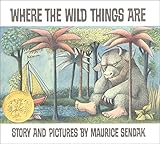Lesson 2: Third Person Point of View
Lesson Plan
Where the Wild Things Are | 740L

- Learning Goal
- Identify and describe the third person point of view.
- Duration
- Approximately 50 minutes
- Necessary Materials
- Provided: Example Chart for Direct Teaching, Example Chart for Direct Teaching and Guided Practice (Clues for Determining Point of View), Independent Practice Worksheet
Not Provided: Where the Wild Things Are by Maurice Sendak, chart paper, markers
-
Teacher Modeling

will review what we have learned about first person point of view in lesson 1. I will introduce the third person point of view by explaining that the narrator is telling the story from someone else’s viewpoint and the narrator is not a character in the story. I will read the sentences written on chart paper and model how to identify the sentences written in the third person. (See Teaching Teacher Example Chart provided below in Teacher and Student Materials.) I will discuss how the sentences are written as if the narrator is watching what is happening to someone else.
-
Think Check
Ask: How did I identify which sentence was written in third person point of view? Students should respond that you read the sentence and thought about whether the narrator was telling the story about someone else and not a character in the story.
-
Guided Practice

will read Where the Wild Things Are by Maurice Sendak and identify the point of view of the book (third person). We will discuss and chart (example provided) what we notice about this point of view. (See Direct Teaching and Guided Practice Example Chart provided below.)
-
Independent Practice

will read three paragraphs and identify which is written in the third person. You will explain how you determined the point of view of the text. (Student Independent Practice is provided below.)
Texts & Materials
Standards Alignment
(To see all of the ReadWorks lessons aligned to your standards, click here.)




Super helpful materials, especially for clarifying literary terms and how to identify them correctly in varied texts! Thank you! I analyze student work, and your sources help me fill in the holes so well! I'm so glad I joined!
This is helpful for the varied levels of readers I have in my special ed.classroom.
These lessons are very helpful! Thanks (: